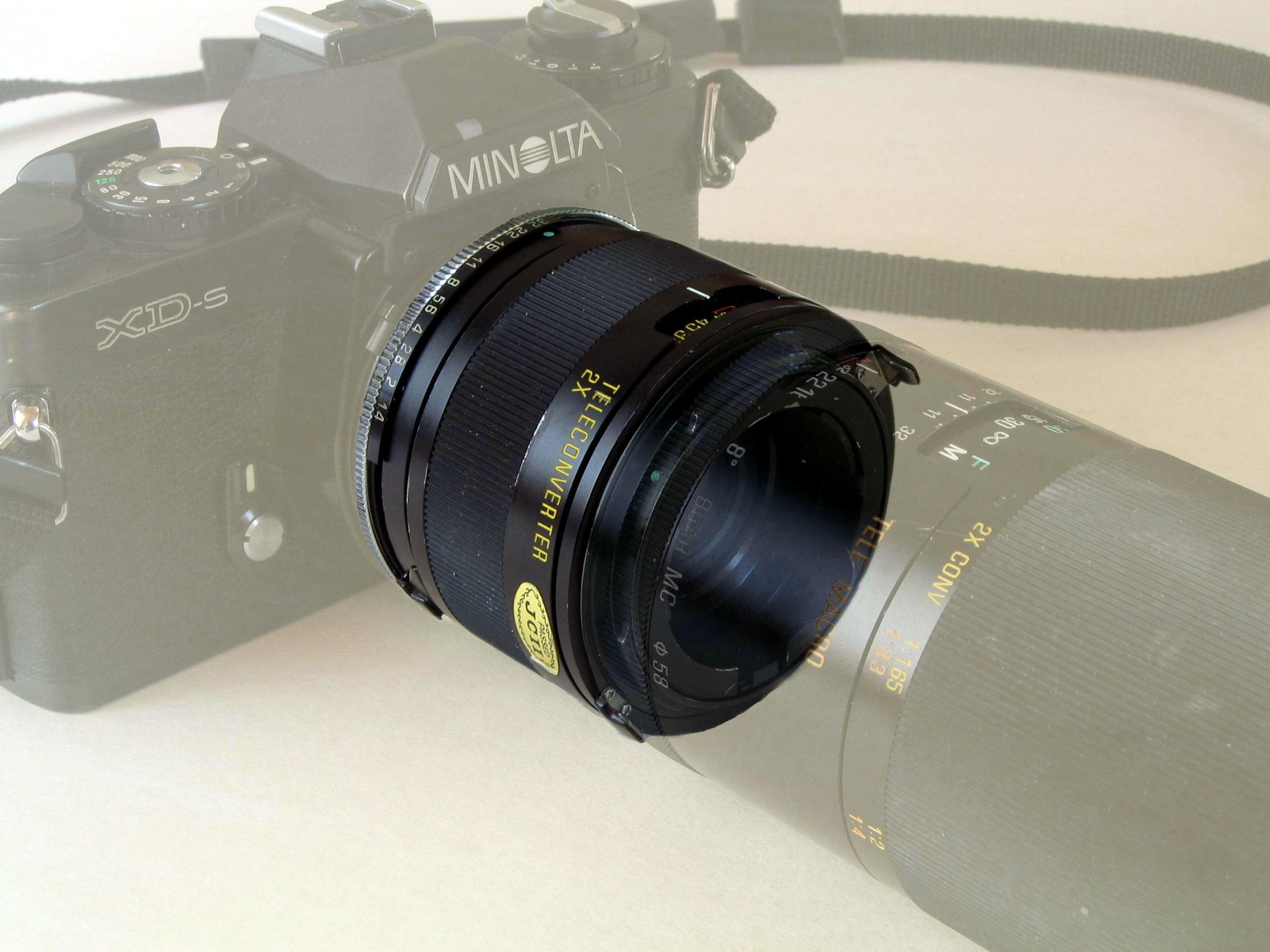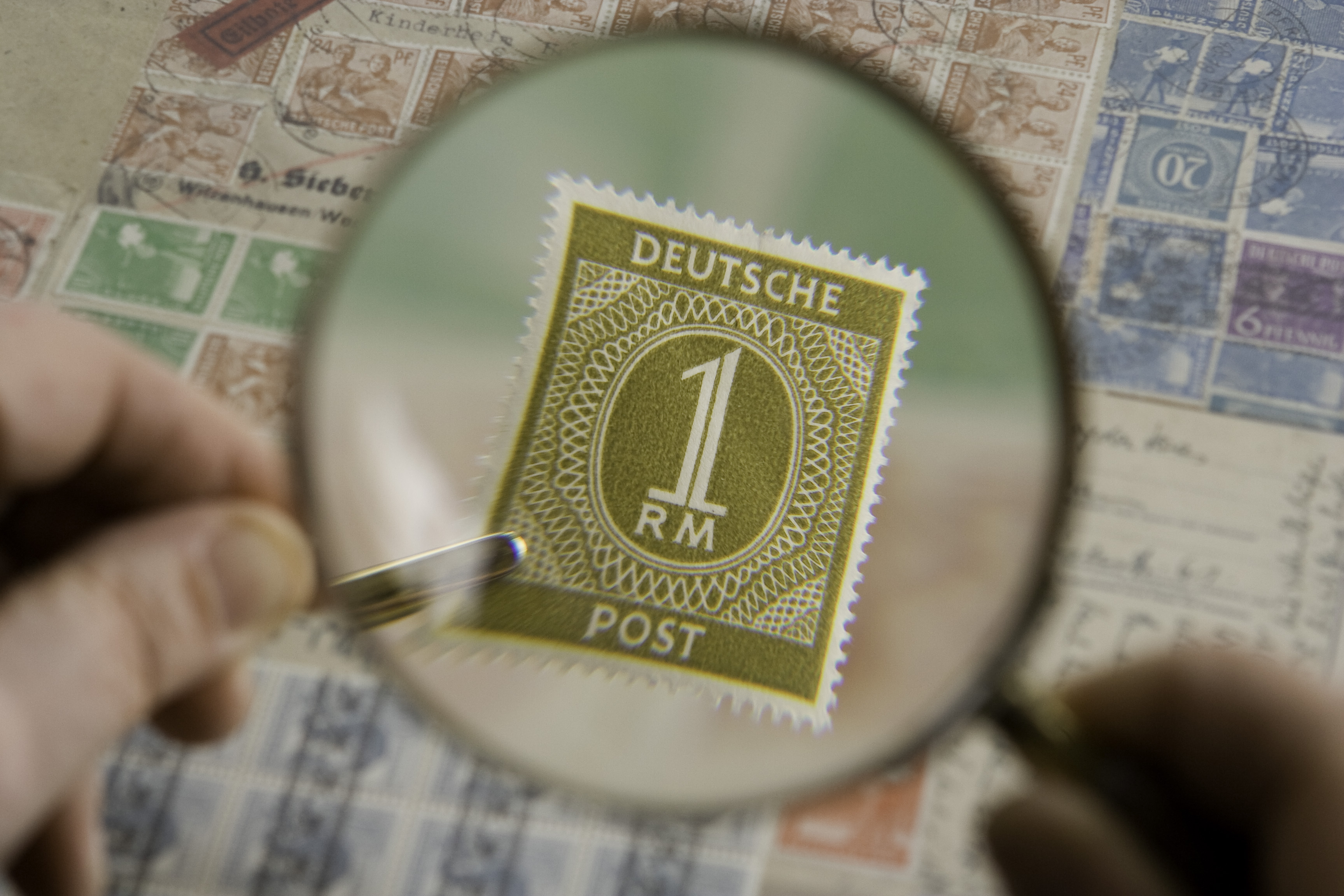|
Barlow Lens
The Barlow lens, named after Peter Barlow, is a diverging lens which, used in series with other optics in an optical system, increases the effective focal length of an optical system as perceived by all components that are after it in the system. The practical result is that inserting a Barlow lens magnifies the image. A real barlow lens is not a single glass element, because that would generate chromatic aberration, and spherical aberration if the lens is not aspheric. More common configurations use three or more elements for achromatic correction or apochromatic correction and higher image quality. Telescope use In its astronomical use, a Barlow lens may be placed immediately before an eyepiece to effectively decrease the eyepiece's focal length by the amount of the Barlow's divergence. Since the magnification provided by a telescope and eyepiece is equal to the telescope's focal length divided by the eyepiece's focal length, this has the effect of increasing the magnificatio ... [...More Info...] [...Related Items...] OR: [Wikipedia] [Google] [Baidu] |
Barlow Lens
The Barlow lens, named after Peter Barlow, is a diverging lens which, used in series with other optics in an optical system, increases the effective focal length of an optical system as perceived by all components that are after it in the system. The practical result is that inserting a Barlow lens magnifies the image. A real barlow lens is not a single glass element, because that would generate chromatic aberration, and spherical aberration if the lens is not aspheric. More common configurations use three or more elements for achromatic correction or apochromatic correction and higher image quality. Telescope use In its astronomical use, a Barlow lens may be placed immediately before an eyepiece to effectively decrease the eyepiece's focal length by the amount of the Barlow's divergence. Since the magnification provided by a telescope and eyepiece is equal to the telescope's focal length divided by the eyepiece's focal length, this has the effect of increasing the magnificatio ... [...More Info...] [...Related Items...] OR: [Wikipedia] [Google] [Baidu] |
Astronomy
Astronomy () is a natural science that studies astronomical object, celestial objects and phenomena. It uses mathematics, physics, and chemistry in order to explain their origin and chronology of the Universe, evolution. Objects of interest include planets, natural satellite, moons, stars, nebulae, galaxy, galaxies, and comets. Relevant phenomena include supernova explosions, gamma ray bursts, quasars, blazars, pulsars, and cosmic microwave background radiation. More generally, astronomy studies everything that originates beyond atmosphere of Earth, Earth's atmosphere. Cosmology is a branch of astronomy that studies the universe as a whole. Astronomy is one of the oldest natural sciences. The early civilizations in recorded history made methodical observations of the night sky. These include the Babylonian astronomy, Babylonians, Greek astronomy, Greeks, Indian astronomy, Indians, Egyptian astronomy, Egyptians, Chinese astronomy, Chinese, Maya civilization, Maya, and many anc ... [...More Info...] [...Related Items...] OR: [Wikipedia] [Google] [Baidu] |
Objective (optics)
In optical engineering, the objective is the optical element that gathers light from the object being observed and focuses the light rays to produce a real image. Objectives can be a single lens or mirror, or combinations of several optical elements. They are used in microscopes, binoculars, telescopes, cameras, slide projectors, CD players and many other optical instruments. Objectives are also called object lenses, object glasses, or objective glasses. Microscope objectives The objective lens of a microscope is the one at the bottom near the sample. At its simplest, it is a very high-powered magnifying glass, with very short focal length. This is brought very close to the specimen being examined so that the light from the specimen comes to a focus inside the microscope tube. The objective itself is usually a cylinder containing one or more lenses that are typically made of glass; its function is to collect light from the sample. Magnification One of the most important prope ... [...More Info...] [...Related Items...] OR: [Wikipedia] [Google] [Baidu] |
Microscopy
Microscopy is the technical field of using microscopes to view objects and areas of objects that cannot be seen with the naked eye (objects that are not within the resolution range of the normal eye). There are three well-known branches of microscopy: optical, electron, and scanning probe microscopy, along with the emerging field of X-ray microscopy. Optical microscopy and electron microscopy involve the diffraction, reflection, or refraction of electromagnetic radiation/electron beams interacting with the specimen, and the collection of the scattered radiation or another signal in order to create an image. This process may be carried out by wide-field irradiation of the sample (for example standard light microscopy and transmission electron microscopy) or by scanning a fine beam over the sample (for example confocal laser scanning microscopy and scanning electron microscopy). Scanning probe microscopy involves the interaction of a scanning probe with the surface of the objec ... [...More Info...] [...Related Items...] OR: [Wikipedia] [Google] [Baidu] |
Telephoto Lens
A telephoto lens, in photography and cinematography, is a specific type of a long-focus lens in which the physical length of the lens is shorter than the focal length. This is achieved by incorporating a special lens group known as a ''telephoto group'' that extends the light path to create a long-focus lens in a much shorter overall design. The angle of view and other effects of long-focus lenses are the same for telephoto lenses of the same specified focal length. Long-focal-length lenses are often informally referred to as ''telephoto lenses'', although this is technically incorrect: a telephoto lens specifically incorporates the telephoto group. Telephoto lenses are sometimes broken into the further sub-types of short telephoto (85–135 mm in 35 mm film format), medium telephoto: (135–300 mm in 35 mm film format) and super telephoto (over 300 mm in 35 mm film format) . Construction In contrast to a telephoto lens, for any given focal len ... [...More Info...] [...Related Items...] OR: [Wikipedia] [Google] [Baidu] |
Teleconverter
A teleconverter (sometimes called tele extender) is a secondary lens mounted between a camera and a photographic lens which enlarges the central part of an image obtained by the lens. For example, a 2× teleconverter for a 35 mm camera enlarges the central 12×18 mm part of an image to the size of 24×36 mm in the standard 35 mm film format. Teleconverters are typically made in 1.4×, 1.7×, 2× and 3× variants, with 1.4× and 2× being the most common. A 2× teleconverter doubles the apparent focal length of a given lens. Teleconverters also decrease the intensity of the light that reaches the film plane (or sensor) by the square of its magnification. A 2× teleconverter reduces the light to 1/4, doubles the focal ratio and halves the resolution of the master lens it is connected to. This, however, does not necessarily halve the resolution of the digital image. A closely related device reduces the focal length. It is generally marketed under the name speed ... [...More Info...] [...Related Items...] OR: [Wikipedia] [Google] [Baidu] |
Telescope
A telescope is a device used to observe distant objects by their emission, absorption, or reflection of electromagnetic radiation. Originally meaning only an optical instrument using lenses, curved mirrors, or a combination of both to observe distant objects, the word ''telescope'' now refers to a wide range of instruments capable of detecting different regions of the electromagnetic spectrum, and in some cases other types of detectors. The first known practical telescopes were refracting telescopes with glass lenses and were invented in the Netherlands at the beginning of the 17th century. They were used for both terrestrial applications and astronomy. The reflecting telescope, which uses mirrors to collect and focus light, was invented within a few decades of the first refracting telescope. In the 20th century, many new types of telescopes were invented, including radio telescopes in the 1930s and infrared telescopes in the 1960s. Etymology The word ''telescope'' was coin ... [...More Info...] [...Related Items...] OR: [Wikipedia] [Google] [Baidu] |
Magnification
Magnification is the process of enlarging the apparent size, not physical size, of something. This enlargement is quantified by a calculated number also called "magnification". When this number is less than one, it refers to a reduction in size, sometimes called ''minification'' or ''de-magnification''. Typically, magnification is related to scaling up visuals or images to be able to see more detail, increasing resolution, using microscope, printing techniques, or digital processing. In all cases, the magnification of the image does not change the perspective of the image. Examples of magnification Some optical instruments provide visual aid by magnifying small or distant subjects. * A magnifying glass, which uses a positive (convex) lens to make things look bigger by allowing the user to hold them closer to their eye. * A telescope, which uses its large objective lens or primary mirror to create an image of a distant object and then allows the user to examine the image clo ... [...More Info...] [...Related Items...] OR: [Wikipedia] [Google] [Baidu] |
Amateur Telescope Making
''Amateur Telescope Making'' (''ATM'') is a series of three books edited by Albert G. Ingalls between 1926 and 1953 while he was an associate editor at ''Scientific American''. The books cover various aspects of telescope construction and observational technique, sometimes at quite an advanced level, but always in a way that is accessible to the intelligent amateur. The caliber of the contributions is uniformly high and the books have remained in constant use by both amateurs and professionals. The first volume was essentially a reprinting of articles written by Ingalls and Russell W. Porter for Ingalls's monthly column "The Backyard Astronomer" (later " The Amateur Scientist") in the 1920s. It also featured numerous drawings by Porter. The two later volumes contained chapters written by James Gilbert Baker, George Ellery Hale, George Willis Ritchey and others on topics ranging from lens grinding to monochromators to photoelectric photometry. Much of the information, including ... [...More Info...] [...Related Items...] OR: [Wikipedia] [Google] [Baidu] |
Eyepiece
An eyepiece, or ocular lens, is a type of lens that is attached to a variety of optical devices such as telescopes and microscopes. It is named because it is usually the lens that is closest to the eye when someone looks through the device. The objective lens or mirror collects light and brings it to focus creating an image. The eyepiece is placed near the focal point of the objective to magnify this image. The amount of magnification depends on the focal length of the eyepiece. An eyepiece consists of several "lens elements" in a housing, with a "barrel" on one end. The barrel is shaped to fit in a special opening of the instrument to which it is attached. The image can be focused by moving the eyepiece nearer and further from the objective. Most instruments have a focusing mechanism to allow movement of the shaft in which the eyepiece is mounted, without needing to manipulate the eyepiece directly. The eyepieces of binoculars are usually permanently mounted in the binocula ... [...More Info...] [...Related Items...] OR: [Wikipedia] [Google] [Baidu] |
Qantas Boeing 747-400 VH-OJU Over Starbeyevo Kustov
Qantas Airways Limited ( ) is the flag carrier of Australia and the country's largest airline by fleet size, international flights, and international destinations. It is the List of airlines by foundation date, world's third-oldest airline still in operation, having been founded in November 1920; it began international passenger flights in May 1935. ''Qantas'' is an Acronym and initialism, acronym of the airline's original name, Queensland and Northern Territory Aerial Services, as it originally served Queensland and the Northern Territory, and is popularly nicknamed "The Flying Kangaroo". Qantas is a founding member of the Oneworld airline alliance. The airline is based in the Sydney suburb of Mascot, New South Wales, Mascot, adjacent to its main hub at Sydney Airport. , Qantas had a 65 per cent share of the Australian domestic market and carried 14.9 per cent of all passengers travelling into and out of Australia. Various subsidiary airlines operate to regional centres and on ... [...More Info...] [...Related Items...] OR: [Wikipedia] [Google] [Baidu] |
Peter Barlow (mathematician)
Peter Barlow (13 October 1776 – 1 March 1862)Lance Day and Ian McNeil, ''Biographical dictionary of the history of technology'', Routledge, 1995, page 42. was an English mathematician and physicist. Work in mathematics In 1801, Barlow was appointed assistant mathematics master at the Royal Military Academy, Woolwich, and retained this post until 1847. He contributed articles on mathematics to ''The Ladies' Diary'' as well as publishing books such as: ''An Elementary Investigation of the Theory of Numbers''(1811); ''A New Mathematical and Philosophical Dictionary''(1814); and ''New Mathematical Tables''(1814). The latter became known as ''Barlow's Tables'' and gives squares, cubes, square roots, cube roots, and reciprocals of all integer numbers from 1 to 10,000. These tables were regularly reprinted until 1965, when computers rendered them obsolete. He contributed to ''Rees's Cyclopædia'' articles on Algebra, Analysis, Geometry and Strength of Materials. Barlow also contribu ... [...More Info...] [...Related Items...] OR: [Wikipedia] [Google] [Baidu] |










